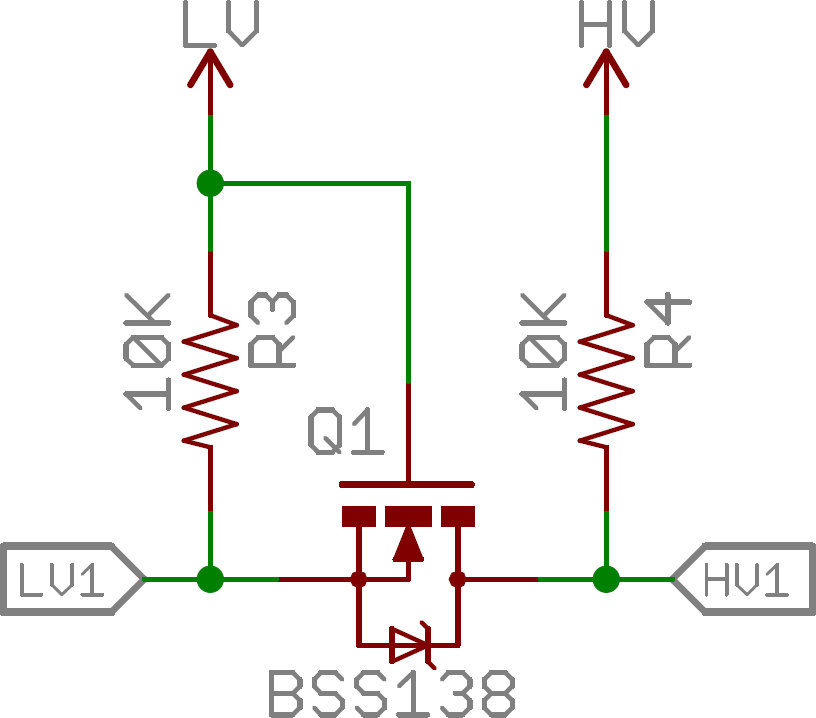

You have several shifter options when you need data to travel back and forth between different voltage levels. This particular chip only passes signals one way - or one way at a time depending on the state of the DIR pin - so if you need translation in both directions simultaneously, you'll want a different solution. As noted on its datasheet, 3.3V or 5V devices can drive inputs, allowing it to resolve a mixed signal environment into a consistent output voltage. The shifter converts the 5V output from the sensor to a 3.3V signal to the Wemos board, causing the LED to light up in response (per a simple example program), while averting the danger of frying things from non-approved voltage levels. The output-enable (OE) pin is pulled to ground, while the DIR pin is connected to V CC, allowing shifts to occur from A to B pins. The 3.3V supplied from the Wemos D1 mini board to the chip's V CC pinout dictates the output level and could theoretically be as low as 1.65V, depending on the needs of your circuit.Ģ. The output in blue feeds to the A3 pin, which then passes to pin B3, set at a 3.3V level. You can see this setup in the image below, where 5V powers a sensor module. The direction-control (DIR) pin selects the shift's direction from one or more of the eight A or B input or output pins to its counterpart on the other side of the chip. This shifter can convert logic levels from inputs up to 5.5V down to between 3.6V and 1.65V, depending on the Voltage (V CC) powering the device. One basic level-shifter is the 74LVC245 chip from Texas Instruments. Uni-Directional Level Shifting with the 74LVC245 Let's discuss a few shift dividers you might consider in your future designs or experiments. Whether shifts take place in one direction or are bi-directional, allowing signals to travel back and forth as needed.

How much the shift may introduce time delay. Usually, this shift takes place between 5V and 3.3V, but you can use other voltages as needed, such as 2.5V or 1.8V. What Does a Level Shifter Do?Ī level shifter translates logic signals from one level to another. Voltage dividers can be helpful when you need to mix signal types, but what if you'd like a component to shift things around in a more elegant manner? The answer, of course, is the aptly named level shifter.

3.3 v logic levels Bluetooth#
The HC-05 Bluetooth module, for example, operates at 3.3V, but many sensors can operate at either 5V or 3.3V.


 0 kommentar(er)
0 kommentar(er)
